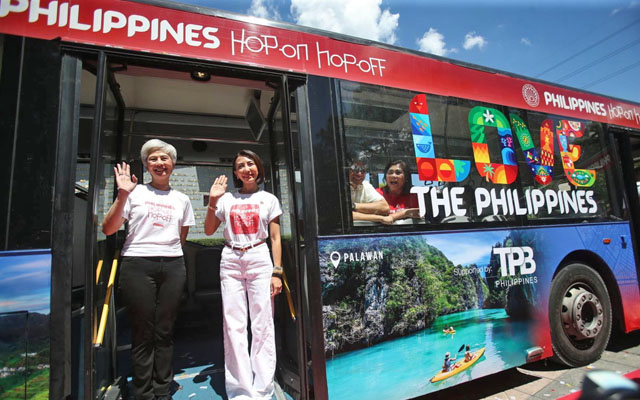A Comprehensive Assessment of the Approaches and Techniques for Effective Transportation Marketing Campaigns
Transportation marketing campaign provide an one-of-a-kind possibility for brands to involve with varied audiences in dynamic atmospheres. To attain success, it is necessary to comprehend the nuances of target demographics, execute ingenious style techniques, and choose ideal placement areas. Furthermore, the performance of these projects can be considerably boosted by closely keeping an eye on performance metrics and adjusting tactics appropriately. As we discover these important parts, it becomes clear that the course to an impactful transportation advertising and marketing strategy is both satisfying and elaborate, increasing the concern of just how best to navigate these complexities for optimal brand presence.
Understanding Target Demographics
Recognizing target demographics is crucial for the success of transportation marketing campaign (Transit Advertising Philippines). Identifying details target market sectors makes it possible for advertisers to tailor their messages properly, making certain that the content reverberates with the intended customers. This strategy enhances involvement and maximizes return on financial investment
To efficiently assess target demographics, marketing experts have to think about a number of essential elements, consisting of age, income line of work, level, and way of living preferences. As an example, a campaign intended at young experts may focus on ease and modernity, while one targeting families might emphasize safety and integrity. Furthermore, geographical aspects such as country versus city settings can considerably influence consumer behavior and preferences.
Data collection techniques such as studies, focus teams, and social media sites analytics provide important insights into demographic trends and consumer practices. By leveraging this information, advertisers can craft compelling narratives that align with the values and requirements of their target audience.
Ultimately, comprehending target demographics not only notifies the critical instructions of transportation marketing campaign but additionally makes certain that sources are designated successfully. This targeted technique boosts the probability of achieving project goals, fostering brand name commitment, and driving conversions.
Innovative Style Strategies
Efficient communication with target demographics depends greatly on ingenious imaginative style methods in transit advertising and marketing projects. To successfully record focus in a congested visual setting, designers must focus on clearness and aesthetic effect. Utilizing high-contrast aspects and vibrant shades can enhance presence, making sure that messages are easily readable from a range.
Including dynamic imagery that reverberates with the target audience is crucial. Aesthetic narration strategies can evoke feelings and develop remarkable associations with the brand name. Furthermore, calculated use typography aids share important information rapidly; legible fonts and ideal sizes additionally enhance readability.
Integrating interactive components, such as QR codes or enhanced fact features, can involve commuters past easy monitoring (Transit Advertising Philippines). These strategies not just promote individual communication yet additionally bridge the gap between conventional marketing and electronic engagement
Additionally, utilizing space creatively-- whether on bus wraps, transit shelters, or metro ads-- can result in ingenious designs that break the mold of standard marketing. By welcoming imaginative creativity while preserving brand consistency, projects can cultivate a solid link with their audience, eventually driving both understanding and activity. The combination of these layout strategies is extremely important for attaining successful transit advertising end results.
Strategic Positioning Approaches
Maximizing the impact of transportation over here advertising and marketing depends upon strategic placement methods that guarantee optimal visibility and interaction. Effective positioning involves analyzing high-traffic areas and comprehending traveler demographics to determine the most useful places for ad display screens. As an example, positioning advertisements pop over to these guys near entrances and exits of transit lorries can catch the focus of boarding and touching down travelers, thus boosting exposure.
In addition, making use of both exterior and interior surface areas of transit cars can substantially broaden reach. Exterior ads, visible throughout commutes, engage pedestrians and other chauffeurs, while indoor ads target guests in a captive atmosphere. Additionally, positioning advertisements en route hubs, such as bus terminals or train terminals, enables raised impressions as commuters change in between different settings of transportation.
Timing is likewise crucial; straightening the project launch with peak travel durations makes the most of target market engagement - Transit Advertising Philippines. Moreover, leveraging digital displays en route settings can facilitate dynamic material, giving real-time updates and boosting individual interaction. By utilizing these strategic placement methods, marketing experts can ensure that their transportation ad campaign accomplish optimal exposure, reverberate with the target market, and inevitably drive wanted outcomes

Measuring Campaign Performance
To evaluate the success of transportation ad campaign, it is necessary to utilize a variety of measurement methods that offer insights into audience engagement and overall effectiveness. One primary technique is the usage of key performance signs (KPIs), such as reach, impacts, and involvement prices, which measure how numerous individuals connected and viewed the advertisement with it.
Studies and emphasis groups can also contribute in evaluating customer understandings and recall, allowing marketing professionals to recognize the effect of their messaging. Additionally, tracking website web traffic and social media sites involvement throughout and after the campaign aids measure straight feedbacks to the marketing.
Another reliable method these details is utilizing location-based analytics, which can provide information on foot website traffic around particular transit areas, providing understandings into whether the project effectively recorded the interest of travelers. In addition, analyzing sales data can expose relationships between transportation marketing and enhanced earnings, providing concrete proof of a campaign's effectiveness.
Study of Success
Comprehending the performance of transit ad campaign through measurement methods lays the groundwork for taking a look at real-world instances that illustrate successful end results. One significant study includes a nationwide drink brand that used bus covers in urban areas. The project aimed to enhance brand name presence and sales throughout the summer season. By using geo-targeted digital ads and analytics, the brand determined a 30% increase in sales in regions where the wraps were plainly displayed, demonstrating the straight influence of transportation advertising.
Another compelling example originates from a local not-for-profit company that launched a campaign on train platforms to promote an area occasion. The company incorporated lively visuals with QR codes guiding commuters to a registration page. Post-campaign analysis disclosed a 50% rise in occasion participation compared to the previous year. Making use of direct involvement via innovation intensified the project's reach and efficiency.

Final Thought
In summary, effective transit marketing campaign demand a detailed method that incorporates an understanding of target demographics, ingenious layout methods, and critical placement. By prioritizing psychological engagement with vibrant visuals and optimizing exposure during optimal travel times, brands can dramatically improve their influence. Moreover, recurring measurement of campaign performance through essential efficiency indications and customer responses guarantees continual renovation. Collectively, these methods foster brand visibility and maximize the return on investment en route advertising and marketing efforts.
Understanding target demographics is essential for the success of transit advertising campaigns.Effective interaction with target demographics counts heavily on ingenious creative design techniques in transportation advertising campaigns. By employing these strategic positioning approaches, marketers can make sure that their transit advertising projects accomplish optimal visibility, resonate with the target audience, and ultimately drive wanted results.
Comprehending the efficiency of transit advertising projects with measurement strategies lays the foundation for analyzing real-world instances that highlight effective end results.In recap, successful transportation advertising and marketing campaigns require a detailed method that incorporates an understanding of target demographics, ingenious design techniques, and tactical positioning.
Comments on “Raise Brand Name Get To with Transit Advertising Philippines”